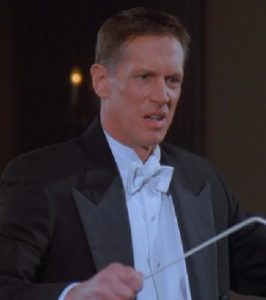I made the above video this past December, very shortly after the “re-premiere” of Stravinksy’s Chant funèbre (Funeral Song) Op. 5. Basically this piece is one of only a handful of works that young Igor completed prior to his astonishing success with The Firebird. It was re-discovered just in 2015 and re-premiered by Valery Gergiev and the Mariyinsky Orchestra in St. Petersburg.
This past weekend I was in Chicago giving pre-concert lectures for the Chicago Symphony at the U.S. premiere (actually, the North American premiere… actually the Americas premiere) of this work which was given by the CSO with Charles Dutoit. I did a whole new round of research and I just thought I’d update/clarify a few things from this video:
1. It’s really sunk in just how amazing the progress that Stravinsky made from his earliest completed compositions to The Firebird. His first real work (though, he didn’t give it an opus number) is a piano sonata in F# minor. Listen to this:
which basically sounds like Victorian salon music that could have been written by Chopin or Schumann (with, perhaps, tinges of Grieg) and compare it to Katscheï’s dance:
The sonata was written when Stravinsky was about 22 (he got a very late start as a composer, though he had soaked up tons of the Russian operatic repertoire through his father, a notable bass soloist);Â Firebird came just 5 years later. Show me another composer who made such progress in such a short time!
2. Speaking of King Kashchei (or however you want to spell it) it turns out that Stravinsky’s teacher, Nikolai Rimsky-Korsakov, had written an opera on that very same subject just a couple of years before Stravinsky began studying with him. There’s a definite commonality between the opening of Rimsky’s opera, the opening of the Chant funèbre, and the opening of The Firebird:
3. I talk a lot in the video above about chromatic music v. diatonic music, but since making it, I’ve delved more deeply into Rimsky-Korsakov’s own octatonicism and it turns out that probably has an even greater impact on the Chant funèbre.
4. There’s also a bit of history that I was able to suss out. Stravinsky’s memory of the Chant funèbre, it turns out, was pretty hazy; for one thing, he recollected having scored it for winds alone, rather than for full (Wagnerian) orchestra. Another thing that he either got mixed up about, or perhaps never knew, is the fate of the score.
Of course, the piece has been retrievable to us because the orchestral parts were preserved. Stravinsky himself assumed that the parts would be found somewhere in a vault in St. Petersburg (he was right) but he lamented that the score had been lost during the Russian Revolution.

It appears he was not quite right about that. Stravinsky had composed the piece at his summer getaway in Ustilug, on the present-day border between Ukraine and Poland. In those days, this whole region, Volhynia, was part of the Russian Empire (and who knows, it may again be before long.) During the “season”, the Stravinskys were living abroad in Switzerland, and during the spring of 1915, Ustilug was caught in the firestorm of a major Austro-German offensive into the Russian Empire.
Stravinsky’s house sustained considerable damage, but not before his brother-in-law, a neighboring landowner, could load his personal items onto on a train bound for Warsaw for safekeeping. Unfortunately the trunk containing Stravinsky’s documents was lost in transit. The best guess is that the score of op. 5 was in this trunk.
5. The big picture takeaway that I have settled on with further study and reflection, is that what this piece shows more than anything is that Stravinsky’s ability to reinvent himself and his music in every piece was already in evidence from the very start of his career. His piano sonata has, as mentioned above, bits of Schumann, Chopin, Grieg, and Tchaikovsky; his Symphony in E-flat, op. 1, is very much in the Glazunov vein. By opp. 3 and 4, he’s showing a pronounced influence of Rimsky-Korsakov and Chausson, and now in op. 5 it’s Wagner and Scriabin.
This anti-pattern of a pattern continued throughout his entire career. In many ways Stravinsky’s artistic output mirrors that of his contemporary Pablo Picasso, in that they both changed styles constantly and yet somehow stayed true to themselves. A tough trick indeed.
OK and the final final takeaway is the same as I reached in this video: I like this piece more every time I hear it. Hopefully sooner rather than later we’ll get a good, clean, professional recording rather than the myriad livestream bootlegs currently littering the YouTube landscape!

